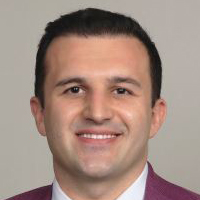Editor’s Note: This month, we offer updates on three significant regulatory topics and advice to pharmaceutical manufacturers on steps they should consider now and in the coming months. As always, if you have questions on any of the content found in this or previous market updates, please reach out to your IntegriChain Consulting Lead or consulting@integrichain.com and we would be happy to talk you through it.
The Intricacies of the Medicaid regulations on Stacking of Discounts for Best Price and Importance of Reasonable Assumptions
On January 25, 2022, the Fourth Circuit Federal District Court dismissed a Federal False Claims Act qui tam suit claiming that Forest Laboratories deliberately reported inflated best prices under the Medicaid Drug Rebate Program (MDRP) Statute by failing to aggregate discounts given to separate customers for purposes of reporting “Best Price,” resulting in underpayment of rebates. The Department of Justice and several state attorneys general upheld the dismissal of the False Act Claim case against Forest Labs, addressed the question whether discounts provided to different customers on a single unit of drug must be combined together – or “stacked” – when determining best price and the importance of having well documented reasonable assumptions.
The Fourth Circuit decision expressly acknowledges that the Medicaid statute and rules governing calculation of the average manufacturer price (AMP) and best price “are among the most completely impenetrable texts within human experience.” Due to ever evolving and complex sales practices and with absence of specific guidance, manufacturers should:
- Document in writing their reasonable assumptions for calculating Medicaid Average Manufacturer’s Price and Best Price delineating to the intent of the regulations and laws applicable. Substantiate that authoritative guidance of appropriate specificity does not warn the company away from its interpretation.
- Continue to monitor regulatory and legal developments surrounding drug pricing, sales practices, compliance, and documentation as regulatory and legal requirements are ever evolving.
References
PHS and 340B Confusion
The connection between the titles of the legislation creating the 340B Drug Pricing Program has caused confusion for years. The 340B Program was made into law through enactment of Public Law 12-585 section 602 of the Veterans Health Care Act of 1992; the Act codified Section 340B of the Public Health Service Act. As a result, ceiling prices made available by this legislation are frequently called “340B,” “602,” or “PHS” prices. Thus, the reason for the confusion.
About the PHS. The US Public Health Service (PHS) operates more than 800 clinics throughout the US, most notably the Indian Health Service. In addition, PHS fully staffs other federal agencies’ healthcare needs such as the Federal Bureau of Prisons’ hospitals. The key point here is, ALL PHS facilities are able to purchase drugs from the FSS schedule. The pharmaceutical FSS schedule is administered by the Department of Veterans Affairs (VA). For FSS pricing, PHS is #3 of the big four federal agencies; therefore, PHS facilities receive FSS big 4 pricing.
About 340B Covered Entities. Alternatively, 340B covered entities and their satellite facilities –now nearly 76,000 – are made eligible for 340B ceiling prices through various grant eligibility requirements. These include hospitals, clinics, and other federally supported health programs – all non-federal institutions. The 340B Drug Pricing Program is administered by the Health Resources & Services Administration (HRSA), and these covered entities are 340B eligible.
The Bottom Line. PHS facilities receive FSS pricing while 340B covered entities are eligible for 340B ceiling prices.
References:
Court Orders HHS to Vacate 340B Payment Discounts through 2022
The appropriate payment model for eligible versus ineligible Part B 340B hospital sales has frequently caused disputes in the pharma industry. As Michael Gorokhovsky originally noted in our June blog, we will revisit one such dispute between the Department of Health and Human Services’ (HHS) guidance in 2018 and the June 15th Supreme Court ruling. Briefly, The Supreme Court unanimously decided to reverse the 2018 decision by the HHS to reduce 340B hospital reimbursement rates on June 15, 2022. The case was taken to the Supreme Court by the American Hospital Association and other hospitals across the US.
The initial HHS decision created different payment types for 340B and non-340B hospitals. The standard reimbursement rate for non-340B hospitals was kept as the average sales price (ASP) plus 6%, while the 340B hospital rate was reduced to ASP minus 22.5%. The 22.5% reduction was based on the estimated discount amount that the Medicare Payment Advisory Commission determined 340B hospitals to receive. With the Supreme Court’s decision reversal, 340B entities will also receive the ASP plus 6% reimbursement rate. (See the June Market Update for more details on the hearings justification).
In the aftermath of the June 15th ruling, the Supreme Court ruled on September 28 that the blanket reduction in ASP-based reimbursement for 340B hospitals be eliminated for the remainder of the year 2022, which is how long the 2018 HHS ruling was intended to run. The HHS persuaded the judge on potential disruptions from eliminating the ruling. However, the limited time left in 2022 was considered to likely only have a small impact on the six-year controversy, which Justice Kavanaugh estimated to be $1.6 billion in annual economic losses.
Immediately, manufacturers could benefit from this ruling through higher reimbursement rates for 340B hospitals.
Looking forward, CMS is set to issue guidance that further clarifies the implications of this ruling. Relevant considerations are likely to focus on retrospective ASP calculations along with current and prospective ASP calculations for 340B and non-340B hospital reimbursement.
References:









